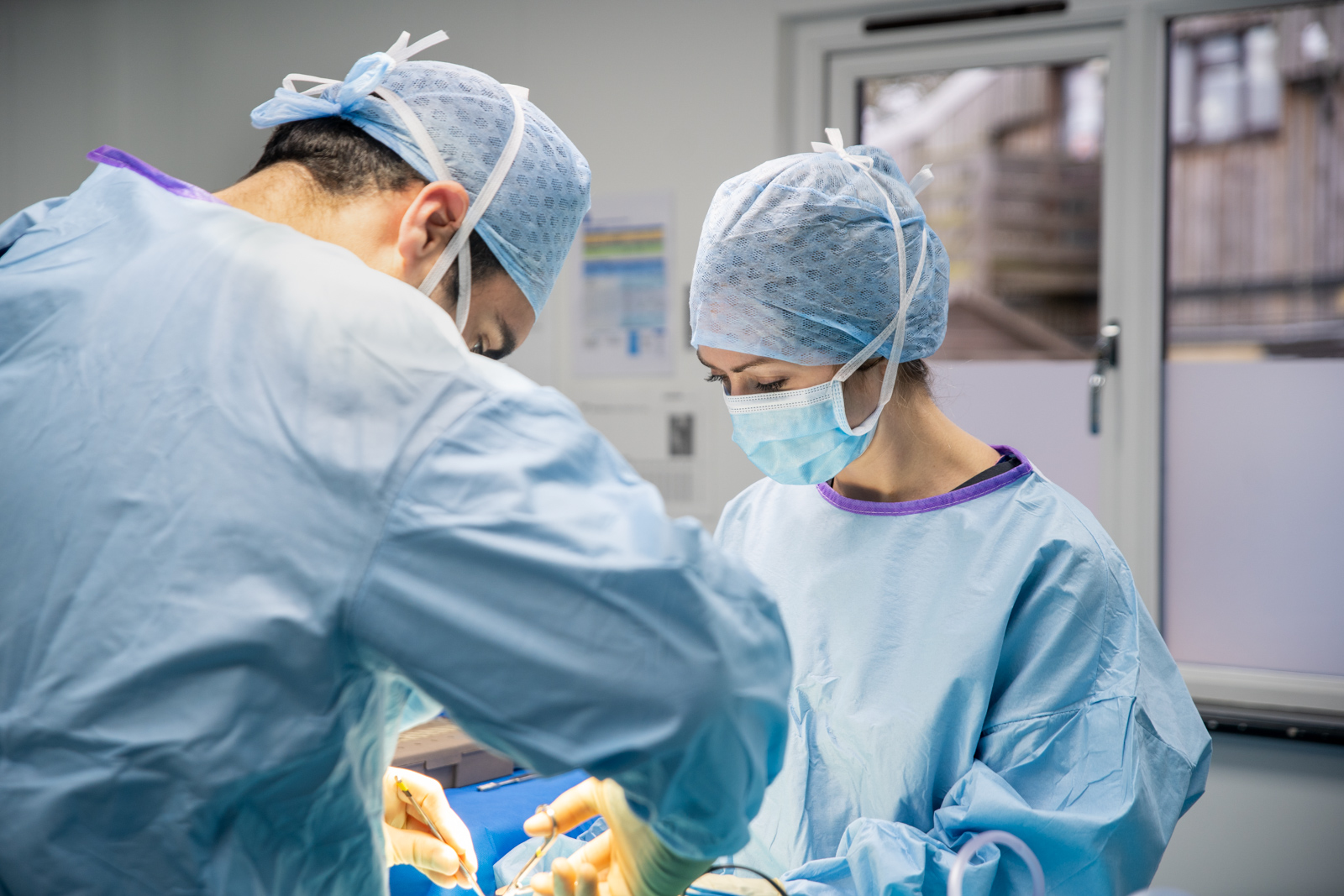Laparoscopic spays
Our practice is excited to offer keyhole surgery, otherwise known as laparoscopic surgery. This is a form of minimally invasive surgery, and is considered by many to be the gold standard for neutering female dogs in particular.
Laparoscopic neutering for bitches
Why choose laparoscopic ovariectomy?
-
The recovery post-surgery is quicker compared to a traditional open spay. This is in part because there is less post operative pain after the keyhole spaying operation.
-
The surgical wounds are much smaller with keyhole surgery: there are two 0.5 to 1 cm incisions made, compared to one of up to 20 cm, which helps with a quicker recovery and has less risk of post operative wound complications.
-
Your dog will return to their normal level of exercise much sooner! Normally they must rest for 10 days, but after laparoscopic surgery only two to three days’ rest is required on average (you can still take your dog for short walks during this time, but we would advise lead walks only for the two days).
-
There is a reduced risk of complications, due to the better visualisation of organs on a magnified screen
- Bleeding from the surgical site is usually less due to the surgeon having much better visualisation of the ovaries and using advanced equipment to seal the blood vessels.
-
Usually no buster collar (cone) is required due to the small size of the wounds.
What does laparoscopic ovariectomy involve?
Why does the laparoscopic ovariectomy cost more than a traditional spay?
Keyhole surgery requires special training, and the use of highly specialised equipment, including small cameras, video screens and special instruments, some of which can only be used once.
Does keyhole spaying have any downsides?
For keyhole surgery, there is a larger area of fur clipped away, which extends up both sides of the dog.
This allows us to pick up the ovaries internally from the outside as they are actually very close to the spine of a dog.
Complications can happen with any surgery, but they are very rare.
In the worst case, keyhole surgery is converted to traditional open surgery, with no long-term consequences.
If only the ovaries are removed, what are the health risks to my pet if the uterus is left inside?
Simple removal of the ovaries is less traumatic than combined removal of the ovaries and uterus as usually done in traditional neuters.
Uterine disease in dogs, including infection and cancer, are mainly due to the female hormone, oestrogen.
Oestrogen is produced by the ovaries, so as long as these are removed, the risks of womb diseases are very small.
Can every dog have keyhole surgery for neutering?
For very small dogs, if there is not enough space for our keyhole cameras and instruments, traditional open surgery is safer. This will be discussed with your vet to ensure the most appropriate surgery is undertaken.
For older dogs, who may already have early stages of disease in their womb, or for dogs with confirmed disease of their womb, traditional open surgery to allow easy removal of their womb is advised.
We would also recommend open surgery in patients that are severely overweight or even better a supported weight loss program prior to considering neutering,
Cases are assessed on an individual basis and depending on the age, weight and size of your dog we can discuss with you the best form of neutering for your pet.
We are able to perform ovariohysterectomy (ovaries and uterus removal) via laparoscopy in some cases, if this is deemed the best option for your pet during surgery.


